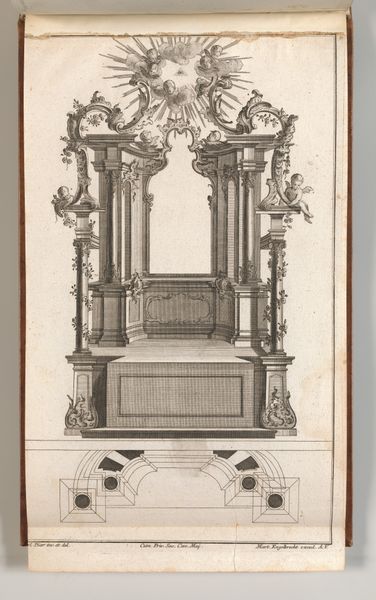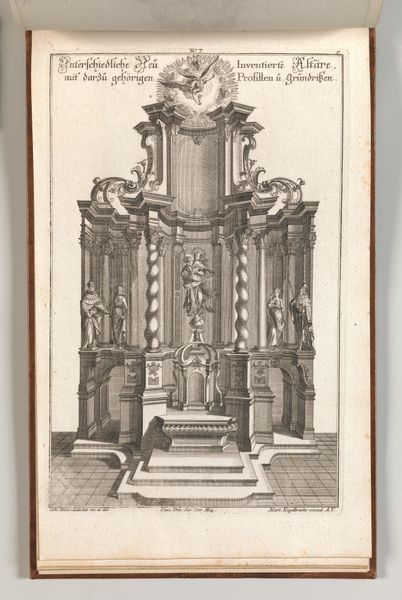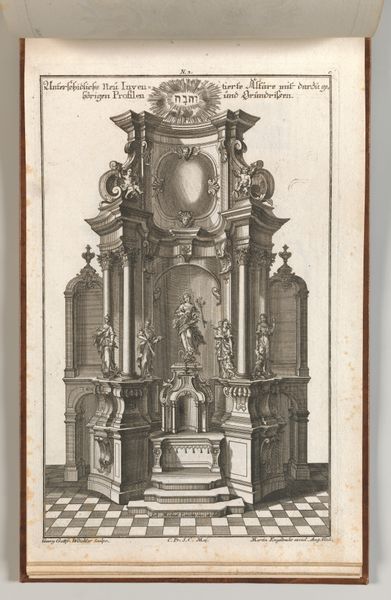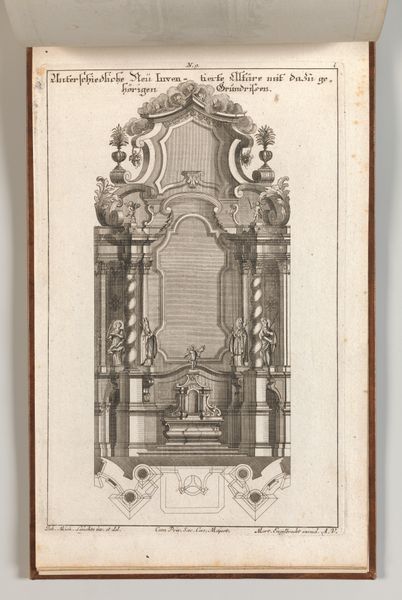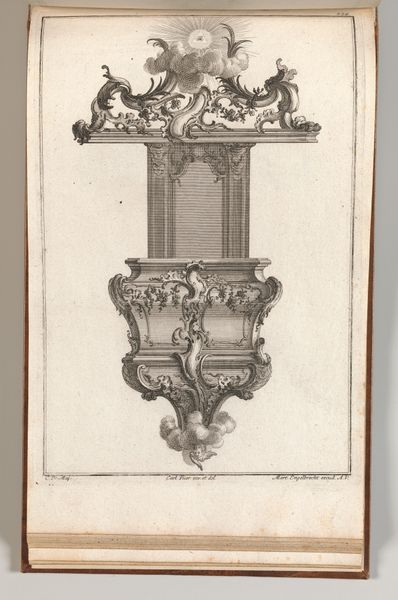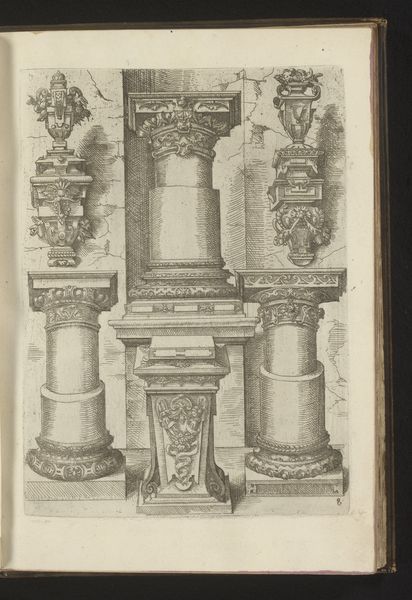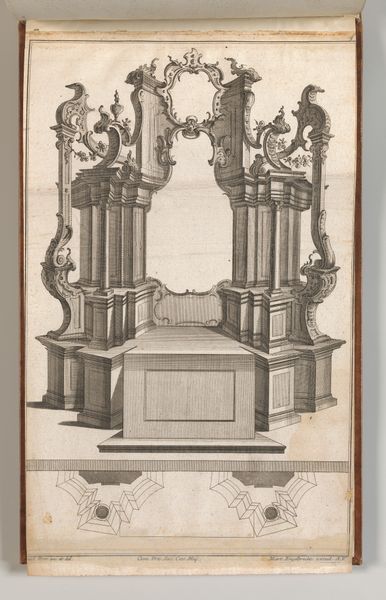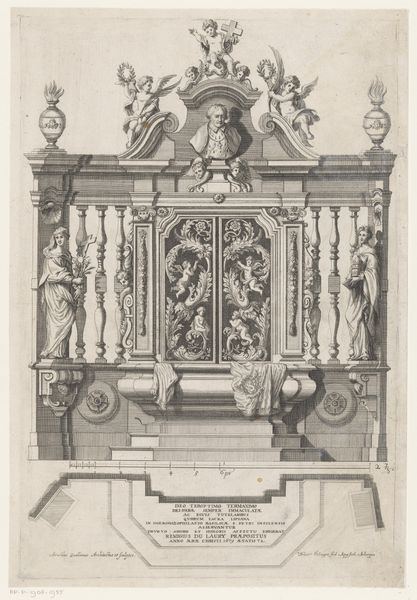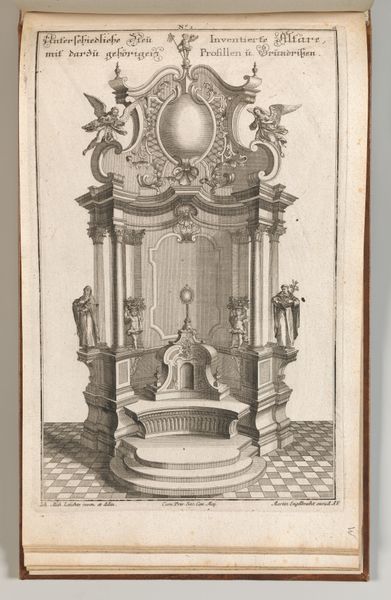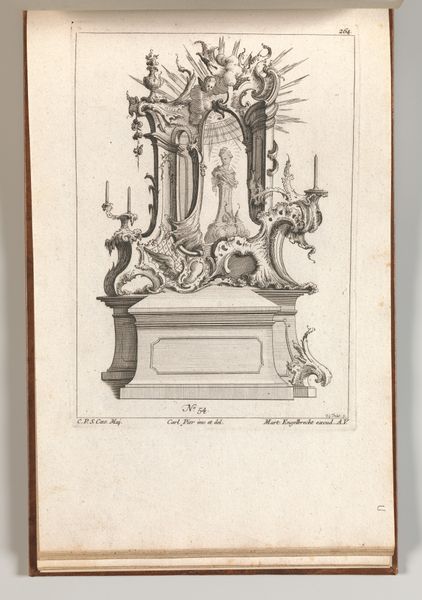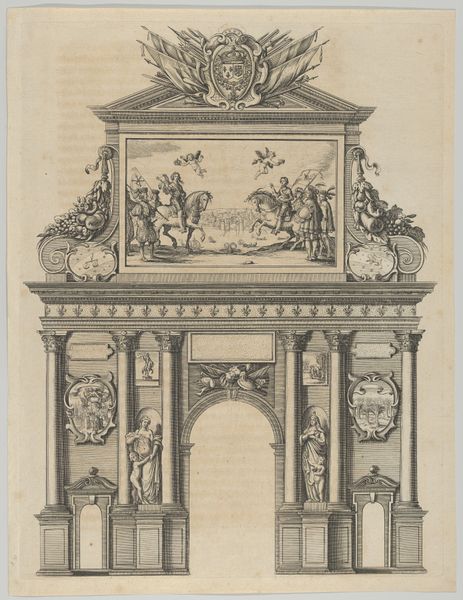
Design for a Monumental Altar, Plate 'p' from 'Unterschiedliche Neu Inventierte Altäre mit darzu gehörigen Profillen u. Grundrißen.' 1745 - 1755
0:00
0:00
drawing, print, engraving, architecture
#
drawing
#
baroque
# print
#
form
#
line
#
engraving
#
architecture
Dimensions: Overall: 8 7/16 × 13 3/4 in. (21.5 × 35 cm)
Copyright: Public Domain
Editor: This engraving, “Design for a Monumental Altar” by Jacob Gottlieb Thelot, made between 1745 and 1755, presents a rather ornate architectural concept. It feels very structured and elaborate, especially given the cherubic figures adorning the top. How do you read this design? Curator: I see an articulation of labor, both envisioned and enacted. The design itself proposes immense labor in material extraction, preparation, and assembly. Consider the engraver's meticulous work, mirroring and anticipating the artisan’s efforts in shaping stone or wood. Do you think Thelot aimed to bridge design and physical production, potentially blurring social boundaries between artist and craftsman? Editor: That's fascinating! I hadn't considered the blurring of those roles. I suppose it highlights how the design itself becomes a kind of production. Does the printmaking medium speak to accessibility of art at this time? Curator: Exactly. Engravings facilitated wider distribution of designs, essentially democratizing architectural ideas. This connects with larger trends of material dissemination and knowledge sharing. The very concept of reproducible architectural designs allows multiple interpretations and potentially alters localized craft economies, because they all draw on one shared original print. Editor: It is as if, by disseminating blueprints, the design is freed from single execution, becoming instead a starting point. I suppose the act of interpretation could in itself also affect cultural values in local craftsmanships? Curator: Precisely. How do you view the role of the decorative cherubs given this lens of labor and production? They feel almost ornamental, a luxurious addition to what is effectively an industrial plan for creating something functional? Editor: Maybe they serve as a symbolic representation of the skill and artistry required, a reminder that this altar isn't just about functionality, it’s also about devotion expressed through crafted beauty. It does however make me think more deeply about labor involved for the making of something like that. Curator: And considering the conditions of production in 18th-century workshops, Thelot's idealized design carries implications for the workers' environment, skill, and remuneration. It prompts questions about whose labor is valued, and who gets left out of a picture perfect ideal like this print.
Comments
No comments
Be the first to comment and join the conversation on the ultimate creative platform.
